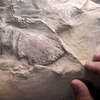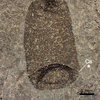The Antikythera Mechanism: An Ancient Greek Computer

A piece of the Antikythera Mechanism. Source: Brett Seymour, WHOI
120 years ago, off the coast of Antikythera island, divers discovered the wreck of a 1st century BCE ship. Many amazing treasures from ancient Greece were pulled from this find: statues of bronze and marble, jewelry, coins, and pottery, but one strange item stood out from the rest. A lump of bronze and wood, not much bigger than a book, that had corroded away over the centuries. It wasn't until a year later, in 1902, that any interest was taken in the device when it was discovered that it contained gear pieces within.
The gears were thought anachronistic to the device, estimated to have been constructed in the 2nd century BCE. Archaeologists were puzzled over the machine until they realized it's purpose. The Antikythera Mechanism was a cosmological clock designed to track the movement of the stars.
Research has continued until this day, with new tools bringing new information. More recently, the device was analyzed with x-ray technology, helping to discover the internal workings as well as the remains of script on the wheels. These fragments of text have been extrapolated into a kind of user manual; a handbook for an ancient computer. It seems this might have been the first ancestor to device you're reading on right now! You can check out this amazing video from the BBC to learn more about the Antikythera Mechanism and if you're interested in more computer history, take a look at our piece on the Cray 1 Supercomputer!
Featured Product
Joe Frazier Boxing Glove
Cool Things!

Is “Paul is Dead” Dead?: Unpacking One Of Pop Culture’s Most Enduring Conspiracy Theories

Scientists Discover Hooves and Skin in Preserved Dinosaur "Mummies!"
A dinosaur discovery just in time for Halloween! In a new analysis of a group of fossils from Wyoming, Scientists have determined this group of fossils are dinosaur “mummies,” with preserved skin and even hooves.

Scientists Record a Bat Catching Birds Mid-Flight!
Bats, birds, screeches, oh my! In a reverse-Hitchcock twist, a new study reveals that a species of European bat catches and eats birds mid-flight.
Specimen Deep Dives

The House that Ruth Built: The Story of the Old Yankee Stadium

The Queen of the Skies: the Story of the Boeing 747

Old Ironsides: The USS Constitution and the Start of the U.S. Navy
Long Form Articles

The Artist Behind the Macintosh: Susan Kare and Apple Computers
While the two Steves, Jobs and Wozniak, are the most well known faces behind Apple computers, equally important to the products and culture of the company were those who crafted the experience of using their computers through design. The most notable of these visual architects was Susan Kare, a designer responsible for “humanizing” Macintosh computers.

Can I Lick It? Yes You Can!
Have you ever been unable to tell if a fossil was really a fossil, but you were too embarrassed to admit it? Have you ever wanted to lick a fossil just because, but you didn’t want to risk judgment from your peers? Well, good news! You can kill two birds with one stone! Licking a fossil can actually help you determine if it’s the real deal or just another rock.

Is It Legal To Own a Meteorite: How to Start Your Outer Space Collection!
Meteorites are some of the rarest geological specimens to be found on Earth. Of course, since these stones are not of our world, purchasing them can sometimes be a confusing process. Is it legal to own a meteorite? In short, yes! Read on for help starting your cosmic collection!

















